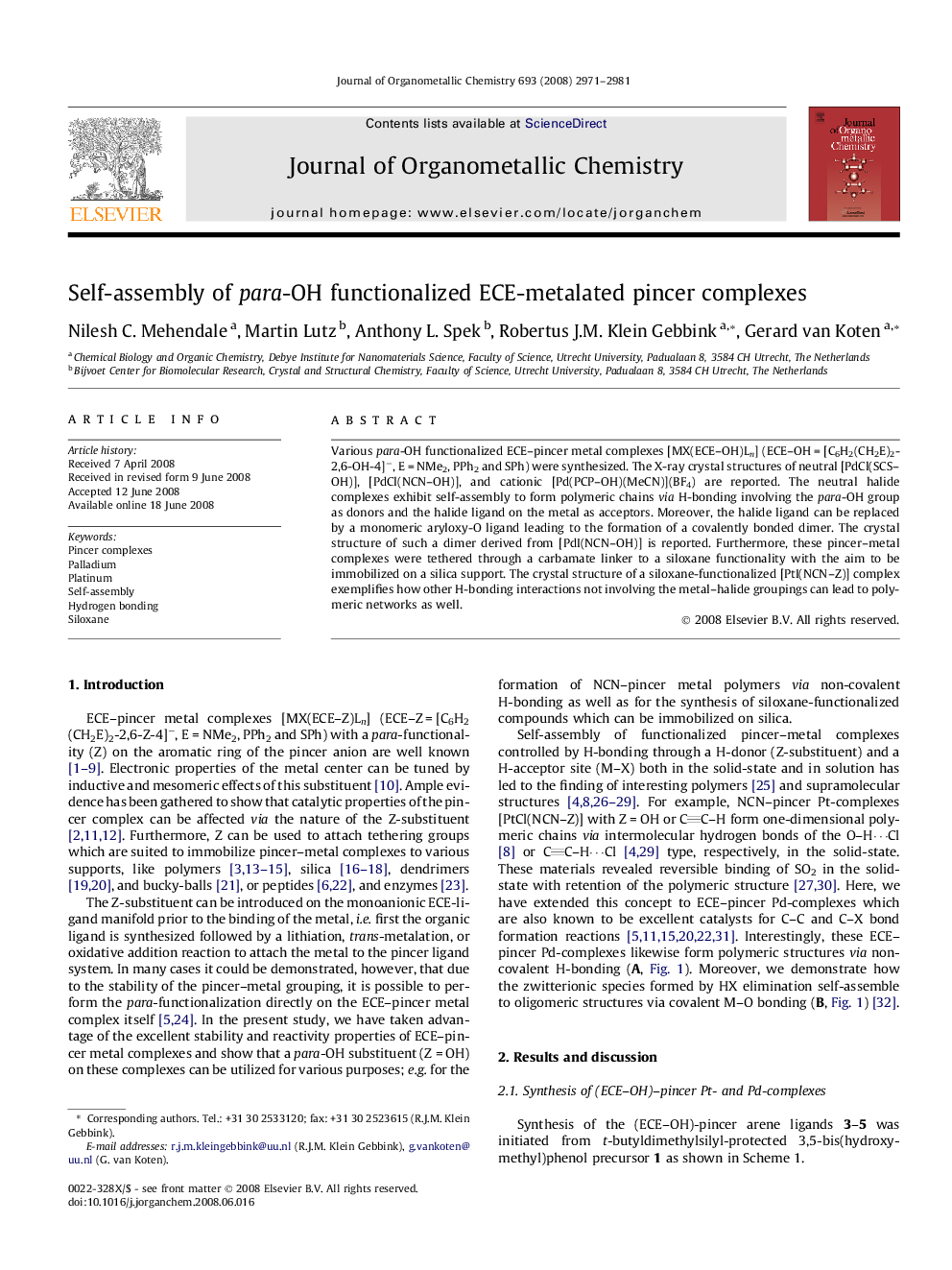| Article ID | Journal | Published Year | Pages | File Type |
|---|---|---|---|---|
| 1326989 | Journal of Organometallic Chemistry | 2008 | 11 Pages |
Various para-OH functionalized ECE–pincer metal complexes [MX(ECE–OH)Ln] (ECE–OH = [C6H2(CH2E)2-2,6-OH-4]−, E = NMe2, PPh2 and SPh) were synthesized. The X-ray crystal structures of neutral [PdCl(SCS–OH)], [PdCl(NCN–OH)], and cationic [Pd(PCP–OH)(MeCN)](BF4) are reported. The neutral halide complexes exhibit self-assembly to form polymeric chains via H-bonding involving the para-OH group as donors and the halide ligand on the metal as acceptors. Moreover, the halide ligand can be replaced by a monomeric aryloxy-O ligand leading to the formation of a covalently bonded dimer. The crystal structure of such a dimer derived from [PdI(NCN–OH)] is reported. Furthermore, these pincer–metal complexes were tethered through a carbamate linker to a siloxane functionality with the aim to be immobilized on a silica support. The crystal structure of a siloxane-functionalized [PtI(NCN–Z)] complex exemplifies how other H-bonding interactions not involving the metal–halide groupings can lead to polymeric networks as well.
Graphical abstractThe synthesis and structural characterization of para-OH functionalized ECE pincer complexes are reported. These complexes were found to self-assemble by means of hydrogen bonding between the metal–halide or cationic metal fragment and the hydroxy group to form polymers or dimers, respectively.Figure optionsDownload full-size imageDownload as PowerPoint slide
